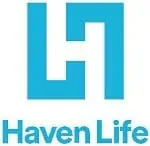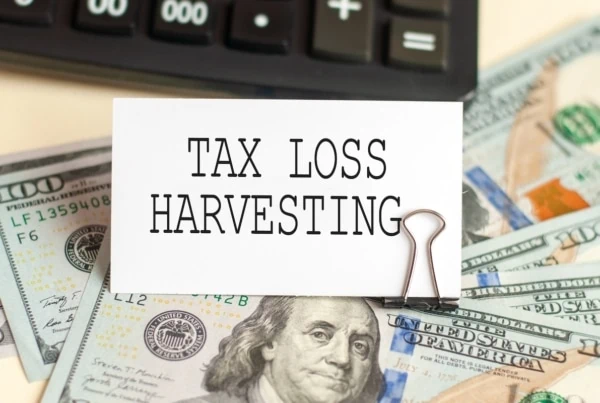Employees can receive numerous forms of cash and non-cash compensation from their employer. For the former, this figures into their reportable taxable income each year on their tax returns.
For certain fringe benefits, employees must include these costs paid on their behalf as taxable income as well.
In particular, for employees who receive group-term life insurance coverage in excess of $50,000 through their employer, they need to report the imputed income associated with this life insurance benefit in their gross income.
In many cases, an employer provides pre-tax benefits to employees (such as health insurance like
high deductible health plans with access to
health savings accounts) and workers receive a tax exemption for them.
However, in the case of life insurance, the imputed income must count toward the overall taxable income of the employee.
This article examines the imputed income related to group-term life insurance provided by employers.
What is Life Insurance?
Life insurance represents a contract between an insurer and an insuree. In general terms, a life insurance contract seeks to transfer the risk of the financial consequences of an insuree dying and leaving the policy beneficiary without financial support.
To counteract this scenario, the insuree (policyholder) purchases a life insurance policy to assign this risk to an insurance company in exchange for a stream of payments (policy premiums).
At the death of the insured, the policy can pay a death benefit in the form of a lump-sum disbursement or a scheduled stream of payments (annuity).
For life insurance policies, many types exist. The major types include the following:
- Term life insurance (carries an imputed income value if paid by an employer)
- Whole life insurance (has a cash surrender value provision)
- Universal life insurance
- Variable life insurance
- Variable universal life insurance
- Permanent life insurance
And while these terms come into force at the outset of the policy, for those who desire to make changes to their policy can do so through
insurance riders and endorsements.
After making changes, be sure to verify them by reviewing the
insurance declaration page.
Finally, while life insurance policy types vary slightly in form, structure and related benefits, the contracts exist primarily to transfer risk from the policyholder to the insurance company.
Related Insurance Topics:
What is Imputed Income?
In addition to monetary compensation (i.e., wages and salaries), some employers provide taxable fringe benefits to their employees.
Imputed income represents the value of this non-monetary compensation given to employees through fringe benefits. Employees must figure this value into their gross taxable income for the year.
This imputed value presents a full picture of the taxable income which the taxpayer reports to the IRS each year. This imputed income combines with other taxable income for an accurate tax and employment withholding view.
Related: 30 Tax Statistics and Facts That Might Surprise You
What is Imputed Income for Life Insurance?
The IRS lays out specific instructions for the treatment of imputed income related to group-term life insurance provided by an employer. This includes a coverage exclusion and then an accounting for how coverage above this limit should count as taxable income.
According to the Internal Revenue Code section 79, a group-term life insurance (employer-provided) exclusion exists for the first $50,000 in coverage provided under an insurance policy carried directly (or indirectly) by an employer.
This IRC section provides the employee with an exclusion from tax consequences if the total insurance coverage amount does not exceed $50,000.
However, because an exclusion exists for the first $50,000 of coverage provided under this group-term life insurance policy, the costs associated with coverage above this represents taxable income to the employee.
Specifically, for any coverage amount in excess of $50,000, the employee must include the imputed cost of coverage as taxable income. This amount will show on the employees’ annual
Form W-2 provided by their employer.
Further, not only does this imputed income qualify for income tax (state and federal), the value of this fringe benefit also faces payroll taxes under Medicare and Social Security.
As a note,
1099 contractors will not receive these benefits because they do not qualify as an employee of the company and therefore do not receive fringe benefits.
However, the premiums paid by an independent contractor for his or her own benefit may qualify as a
self-employment tax deduction.
To calculate the taxable income for employer-paid group-term insurance above the $50,000 coverage limit, the IRS maintains Premium Tables in
Publication 15-B.
To understand the differences between life insurance carried directly or indirectly by the employer, the following section provides greater detail.
Related: 8 Best Ways to Invest a Lump Sum Life Insurance Payout
Carried Directly or Indirectly by the Employer
As stated above, a taxable fringe benefit arises in the event the group-term life insurance coverage exceeds $50,000 and the policy classifies as directly or indirectly carried by the employer. This cost must figure into the taxpayer’s gross income on the Form 1040 return.
To meet the criteria for carried directly or indirectly by the employer, the group-term life insurance policy must have:
- The employer pay any cost of life insurance, or
- The employer arrange for the premium payments and premiums paid by at least one employee subsidize those by at least one other employee (triggering the “straddle” rule)
For the second criterion and the “straddle” rule, see the Publication 15-B above for the IRS Premium Table rates. For reference, determining whether the premiums charges straddle the costs comes from Premium Tables and not the actual cost.
How Do You Calculate Imputed Income for Life Insurance?
To understand this better, consider the following example of how to calculate group-term life insurance imputed income (sometimes referred to as GTL imputed income). Let’s assume an employer only has employees between the ages of 25 through 39 (i.e., young professionals).
Per the Premium Tables provided by the IRS, the employer faces different rates of imputed income, depending on the age brackets of these employees. The age brackets provided by the tables categorize employees at this company into the following age brackets: 25 – 29, 30 -34 and 35 – 39.
When looking at the tables to calculate imputed income, the amounts shown represent the rates paid per $1,000 of group-term life insurance above $50,000 per month.
For the age ranges included in this example, the rates amount to $0.06, $0.08, and $0.09, for the 25-29, 30-34 and 35-39 age brackets, respectively. For simplicity, this employer covers the full cost of the life insurance on its employees’ behalf as a fringe benefit.
Within each category, every employee receives the same life insurance coverage (i.e., the youngest category receives $50,000 of life insurance coverage, the middle category receives $100,000, and the oldest young professionals receive $150,000).
To calculate the taxable income the employees would claim on their tax returns, the youngest age category would have the entire benefit excluded as it meets the $50,000 exclusion limit.
For the middle age category, they would count $48 of taxable imputed income on their tax return (([$100,000 – $50,000 exclusion] / $1,000) * $0.08 * 12 months). Likewise for the oldest category, they would claim $108 of taxable income (([$150,000 – $50,000 exclusion] / $1,000) * $0.09 * 12 months).
What is Imputed Income on Your Paycheck?
With a better understanding of how to calculate the imputed income from life insurance, this amount should reflect on an employee’s paycheck each pay period.
Therefore, the prorated amount of this imputed income for life insurance (or other taxable fringe benefits), should also show on the employee’s tax return.
Is Employer-Paid Life Insurance Taxable to the Employee?
Generally, for the costs associated with providing group-term life insurance coverage above $50,000, employer-paid life insurance is taxable to the employee. This amount reflects on the employee’s paystub as imputed income on life insurance.
Related: Are Life Insurance Proceeds Taxable? The Complete Guide
Do I Have to Pay Taxes on Imputed Income?
Yes. These benefits provided by an employer represent taxable income to the employee. As a result, they must reflect on employees’ tax returns and they must claim imputed income.
If You Need More Term Life Insurance
Now that you know more about the tax implications of imputed income for group-term life insurance premiums paid for by your employer, you might still find yourself needing additional term life insurance for your needs.
In this case, consider the internet your friend. In recent years, shopping for life insurance has migrated online, often negating the need for speaking to an agent/salesperson to get a quote.
Because many companies operate in this online space, we have curated a list of
top online companies that sell life insurance to save you time and effort in your search for the best quotes.
To make this list, the companies included must make shopping for life insurance easy by keeping the process online and quick.
And remember,
getting a quote doesn’t cost you anything! Check out our list below!










